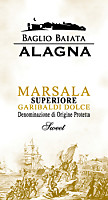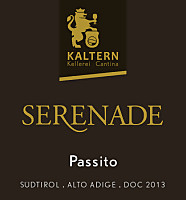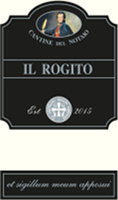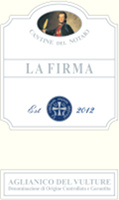|

|
Rosa Rosae 2016 |
| Guerrieri Rizzardi (Veneto, Italy) |
 Corvina (80%), Rondinella (10%), Marcobona (10%) Corvina (80%), Rondinella (10%), Marcobona (10%) |
| Price: € 10.00 |
Score:     |
 Intense onion skin pink and nuances of onion skin pink, transparent.  Intense, clean, pleasing and refined, starts with hints of cherry,
raspberry and strawberry followed by aromas of cyclamen, rose, plum and
peach.
 Crisp attack and however balanced by alcohol, good body, intense
flavors, agreeable.
 Persistent finish with flavors of cherry, raspberry and strawberry.  3 months in steel tanks. |
 Pasta with fish, Fried fish, Fish soups, Sauteed white meat Pasta with fish, Fried fish, Fish soups, Sauteed white meat |

|
Fiano di Avellino 2016 |
| Villa Raiano (Campania, Italy) |
 Fiano Fiano |
| Price: € 15.00 |
Score:     |
 Pale straw yellow and nuances of greenish yellow, very transparent.  Intense, clean, pleasing and refined, starts with hints of apple, plum
and citrus fruits followed by aromas of pear, peach, hazelnut, hawthorn,
broom, pineapple and mineral.
 Crisp attack and however balanced by alcohol, good body, intense
flavors, agreeable.
 Persistent finish with flavors of apple, plum and peach.  Aged in steel tanks. |
 Fried fish, Pasta and risotto with fish and crustaceans, Sauteed fish, Sauteed white meat Fried fish, Pasta and risotto with fish and crustaceans, Sauteed fish, Sauteed white meat |

|
Taurasi 2012 |
| Villa Raiano (Campania, Italy) |
 Aglianico Aglianico |
| Price: € 15.00 |
Score:     |
 Intense ruby red and nuances of garnet red, little transparency.  Intense, clean, pleasing and refined, starts with hints of plum, black
cherry and blackberry followed by aromas of violet, blueberry, vanilla,
chocolate, mace, tobacco and menthol.
 Tannic attack and however balanced by alcohol, full body, intense
flavors, pleasing crispness.
 Persistent finish with flavors of black cherry, plum and blackberry.  Game, Roasted meat, Stewed and braised meat, Hard cheese |
 Game, Roasted meat, Stewed and braised meat, Hard cheese Game, Roasted meat, Stewed and braised meat, Hard cheese |

|
Marsala Superiore Garibaldi Dolce Baglio Baiata |
| Alagna (Sicily, Italy) |
 Grillo, Catarratto, Inzolia Grillo, Catarratto, Inzolia |
| Price: € 10.00 |
Score:     |
 Intense mahogany and nuances of mahogany, little transparency.  Intense, clean, pleasing and refined, starts with hints of rancho,
dried fig and citrus fruit peel followed by aromas of caramel, almond, date,
leather and nail polish.
 Sweet and round attack, however balanced by alcohol, full body, intense
flavors, pleasing crispness.
 Persistent finish with flavors of dried fig, date and caramel.  At least 2 years in cask. |
 Dried fruit tarts, Confectionery Dried fruit tarts, Confectionery |

|
Marsala Vergine Baglio Baiata |
| Alagna (Sicily, Italy) |
 Grillo, Catarratto Grillo, Catarratto |
| Price: € 13.00 |
Score:     |
 Brilliant amber yellow and nuances of amber yellow, transparent.  Intense, clean, pleasing and refined, starts with hints of rancho,
hazelnut and dried fig followed by aromas of citrus fruit peel, vanilla,
leather, licorice, honey and nail polish.
 Crisp attack and however balanced by alcohol, full body, intense
flavors, pleasing roundness.
 Persistent finish with flavors of dried fig, hazelnut and honey.  At least 5 years in cask. |
 Aperitifs, Hard and piquant cheese Aperitifs, Hard and piquant cheese |

|
Franciacorta Rosé Extra Brut Millesimato 2010 |
| La Montina (Lombardy, Italy) |
 Pinot Nero (85%), Chardonnay (15%) Pinot Nero (85%), Chardonnay (15%) |
| Price: € 28.00 |
Score:     |
 Brilliant salmon pink and nuances of salmon pink, transparent, fine and
persistent perlage.
 Intense, clean, pleasing and refined, starts with hints of cherry,
raspberry and bread crust followed by aromas of strawberry, tangerine,
apple, yeast, blueberry, cyclamen and hazelnut.
 Effervescent and crisp attack, however balanced by alcohol, good body,
intense flavors, agreeable.
 Persistent finish with flavors of cherry, raspberry and tangerine.  Refermented in bottle on its lees for at least 30 months. |
 Stuffed pasta with meat, Roasted white meat, Roasted fish, Mushroom soups Stuffed pasta with meat, Roasted white meat, Roasted fish, Mushroom soups |

|
Franciacorta Pas Dosé Riserva Baiana 2008 |
| La Montina (Lombardy, Italy) |
 Chardonnay (55%), Pinot Nero (45%) Chardonnay (55%), Pinot Nero (45%) |
| Price: € 40.00 |
Score:      |
 Pale golden yellow and nuances of straw yellow, very transparent, fine
and persistent perlage.
 Intense, clean, pleasing, refined and elegant, starts with hints of
apple, banana and bread crust followed by aromas of plum, hawthorn,
praline, orange, croissant, yeast, raspberry, butter and honey.
 Effervescent and crisp attack, however balanced by alcohol, good body,
intense flavors, agreeable.
 Persistent finish with flavors of plum, apple and praline.  Refermented in bottle on its lees for at least 70 months. |
 Roasted white meat, Roasted fish, Stuffed pasta, Stewed meat Roasted white meat, Roasted fish, Stuffed pasta, Stewed meat |

|
Alto Adige Sauvignon Blanc Castel Giovanelli 2013 |
| Kellerei Kaltern - Caldaro (Alto Adige, Italy) |
 Sauvignon Blanc Sauvignon Blanc |
| Price: € 25.00 |
Score:      |
 Brilliant straw yellow and nuances of greenish yellow, very
transparent.
 Intense, clean, pleasing, refined and elegant, starts with hints of
gooseberry, elder flower and nettle followed by aromas of peach, pineapple,
mango, pear, apple, broom, tomato leaf, grapefruit and mineral.
 Crisp attack and however balanced by alcohol, good body, intense
flavors, agreeable.
 Persistent finish with flavors of gooseberry, peach and mango.  Fermented in cask, 10 months in cask. |
 Mushroom soups, Vegetable soups, Pasta with fish, Stewed fish, Broiled crustaceans Mushroom soups, Vegetable soups, Pasta with fish, Stewed fish, Broiled crustaceans |

|
Alto Adige Moscato Giallo Passito Serenade 2013 |
| Kellerei Kaltern - Caldaro (Alto Adige, Italy) |
 Moscato Giallo Moscato Giallo |
| Price: € 38.00 - 375ml |
Score:      |
 Pale amber yellow and nuances of golden yellow, transparent.  Intense, clean, pleasing, refined and elegant, starts with hints of
grape, white rose and passion fruit followed by aromas of lychee, candied
fruits, mango, apricot, date, quince, sage, almond, citrus fruit peel,
honey, lavender and hints of vanilla.
 Sweet and round attack, however balanced by alcohol, good body, intense
flavors, pleasing crispness.
 Persistent finish with flavors of grape, passion fruit and mango.  Made from dried grapes. Aged for 24 months in cask. |
 Confectionery, Dried fruit tarts, Hard and piquant cheese Confectionery, Dried fruit tarts, Hard and piquant cheese |

|
Il Rogito 2015 |
| Cantine del Notaio (Basilicata, Italy) |
 Aglianico Aglianico |
| Price: € 12.70 |
Score:     |
 Intense cherry pink and nuances of cherry pink, moderate transparency.  Intense, clean, pleasing and refined, starts with hints of black
cherry, blackberry and strawberry followed by aromas of raspberry,
cyclamen, blueberry, rose, plum and hints of vanilla.
 Crisp attack and however balanced by alcohol, good body, intense
flavors, pleasing roundness.
 Persistent finish with flavors of black cherry, blackberry and
blueberry.
 12 months in cask. |
 Stuffed pasta, Roasted fish, Fish soups, Roasted white meat, Legume soups Stuffed pasta, Roasted fish, Fish soups, Roasted white meat, Legume soups |

|
Aglianico del Vulture La Firma 2012 |
| Cantine del Notaio (Basilicata, Italy) |
 Aglianico Aglianico |
| Price: € 31.20 |
Score:      |
 Intense ruby red and nuances of garnet red, little transparency.  Intense, clean, pleasing, refined and elegant, starts with hints of
black cherry, blackberry and violet followed by aromas of plum, blueberry,
vanilla, raspberry, tobacco, chocolate, cinnamon and menthol.
 Tannic attack and however balanced by alcohol, full body, intense
flavors, pleasing crispness.
 Persistent finish with flavors of black cherry, blackberry and plum.  12 months in cask, 12 months in bottle. |
 Game, Roasted meat, Braised and stewed meat, Hard cheese Game, Roasted meat, Braised and stewed meat, Hard cheese |
|



